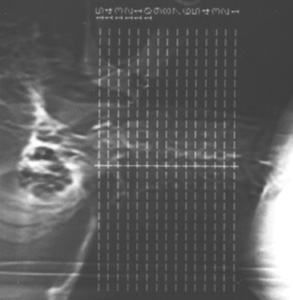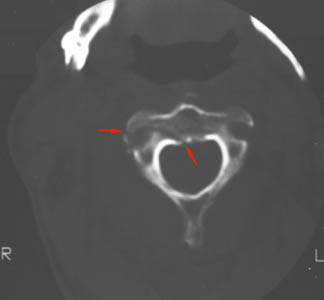Imaging of the Cervical Spine > Technique > CT
CT
![]()
Up to 20 % of fractures are missed on conventional radiographs. CT can help.
CT scan is not mandatory for every patient with cervical spine injury. Most injuries can be diagnosed by plain films. However, if there is a question on the radiograph, CT of the cervical spine should be obtained. CT scan are particularly useful in fractures that result in neurologic deficit and in fractures of the posterior elements of the cervical canal (e.g. Jefferson's fracture) because the axial display eliminates the superimposition of bony structures.
The advantages of CT are:
1. CT is excellent for characterizing fractures and identifying osseous compromise of the vertebral canal because of the absence of superimposition from the transverse view. The higher contrast resolution of CT also provides improved visualization of subtle fractures.
2. CT provides patient comfort by being able to reconstruct images in the axial, sagittal, coronal, and oblique planes from one patient positioning.
The limitations of CT are:
1. difficult to identify fractures that are oriented in axial plane (e.g. dens fractures).
2. unable to show ligamentous injuries.
3. relatively high costs.


(The red arrows demonstrate a fracture of the C2 vertebral body)
